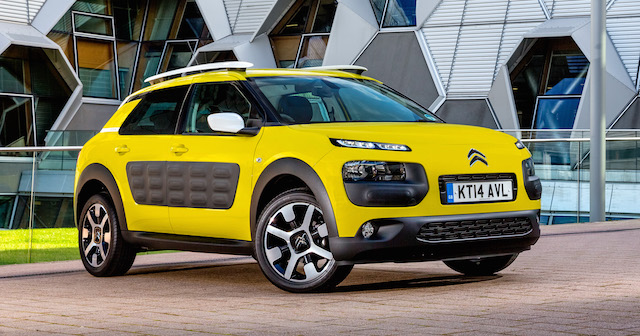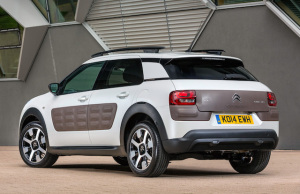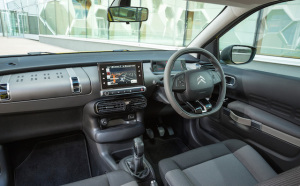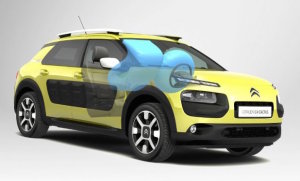
Citroen has hit the ground running in New Zealand with the first new car of 2015, one that stands out from the crowd, a bit like the Citroen 2CV did all those years ago.

It’s the C4 Cactus, distinctive because it is like no other. Citroen NZ divisional manager Simon Rose is counting on the original looks and clever features of the C4 Cactus to lure more new customers to the brand after a record 381 sales last year, Citroen NZ’s best in 20 years.
“We are all exceptionally pleased with this result, as it shows two years of solid, steady growth,” said Rose. “Sales in 2014 were up 27 per cent on 2013 and we grew 20 per cent in 2013 over 2012.
“The result is testament to a strong dealer network, a passionate customer base, a great team of people and a quickly evolving product range offering superb value.”
The C4 Cactus is not actually based on the same platform as other C4 derivatives like the C4 Picasso people-mover. It’s more a bigger C3 platform. The wheelbase is the same as the C4, but shorter front and rear overhangs mean it’s shorter overall. It isn’t as wide as the C4 either.

So what is it exactly? The prototype was tagged a mini SUV-like model, the protective ‘bubble wrap’ plastic cladding – Airbumps, Citroen calls them – and wheel arch protectors suggesting an all-wheel-drive town and country car.
But it’s not. On launch in Europe last year it immediately fell into the front-drive hatchback category, good enough to be BBC Top Gear magazine’s ‘hatchback of the year for 2014.’ The judges said they were won over by the car’s “elegant use of simple resources.”
In NZ, the C4 Cactus might even fall into a category of its own making – again like the 2CV – because it comes with some nifty touches. One design feature is especially clever and that’s the glovebox on top of the dash.

What’s it doing there? That part of the dash is always taken up by the front passenger airbag. Not now. Citroen has mounted the passenger airbag in the roof lining, a commercial first.
It sits under the headlining near the windscreen and, when deployed, unfolds along the windscreen in front of the passenger, rather than towards. It is said to be a better restraint than a normal bag.
Its placement in the roof means interior designers working on the dashboard aren’t hamstrung by space for an airbag. In the C4 Cactus the complete dash is mounted lower for a feeling of greater space.
There will be two Cactus variants for NZ, one with a 68kW/230Nm 1.6-litre diesel mated to a clutchless six-speed manual gearbox, the other a 81kW/205Nm three-cylinder 1.2-lite petrol unit with a five-speed manual ‘box. The diesel is rated Euro 5, the petrol Euro 6.

Citroen claims town-and-around fuel economy for the diesel of 3.6 litres/100km, or 79mpg, and 4.7 litres/100km, or 60mpg, for the petrol. In an economy run over 535km in Britain, where competitors had to maintain a 50km/h minimum average speed to avoid penalties, the diesel Cactus recorded 3.1 litres/100km, or 91mpg.
Helping fuel use is the weight of the Cactus, around 200kg, or two hefty occupants, lighter than the C4 Picasso. Kerb weights are 1055kg for the diesel and 1020kg for the petrol. Braked towing is 825kg for both.
